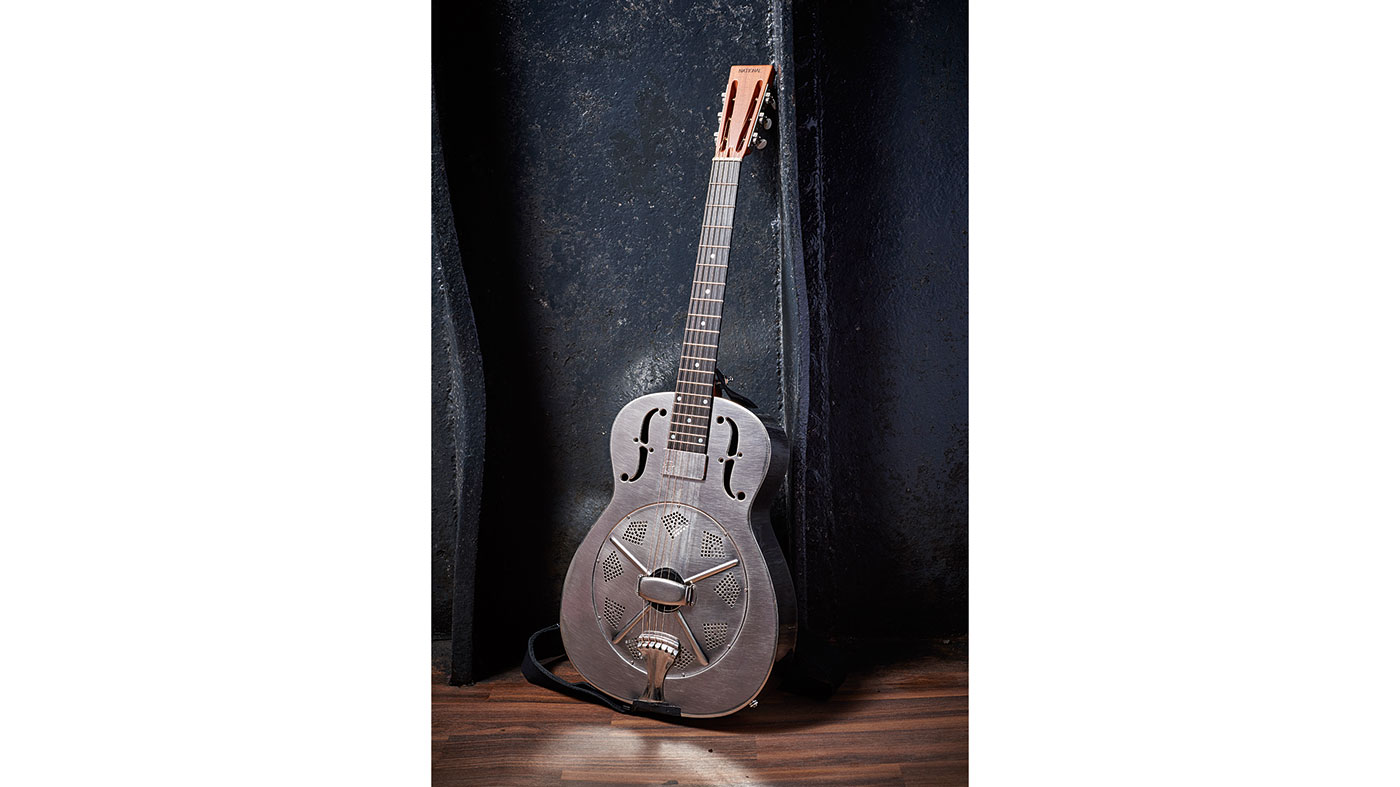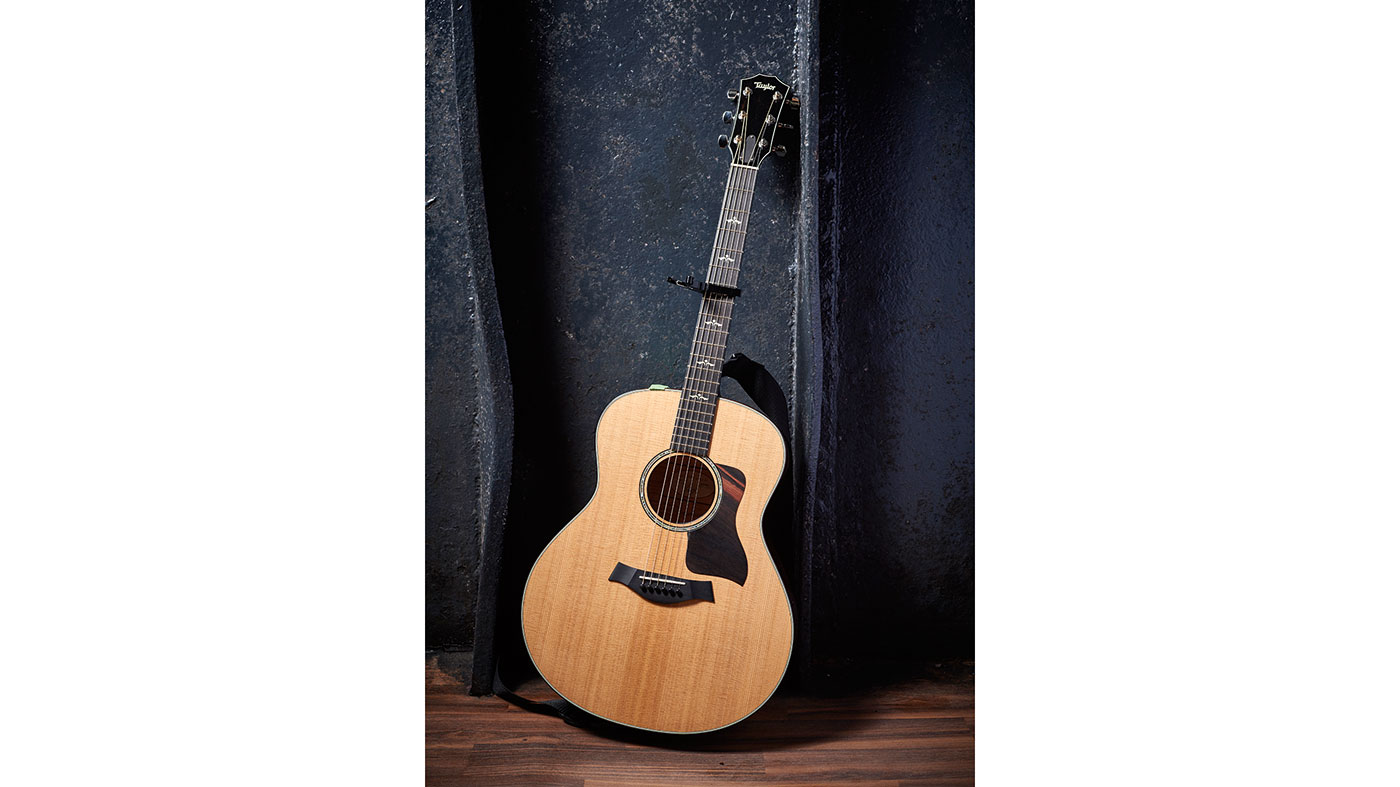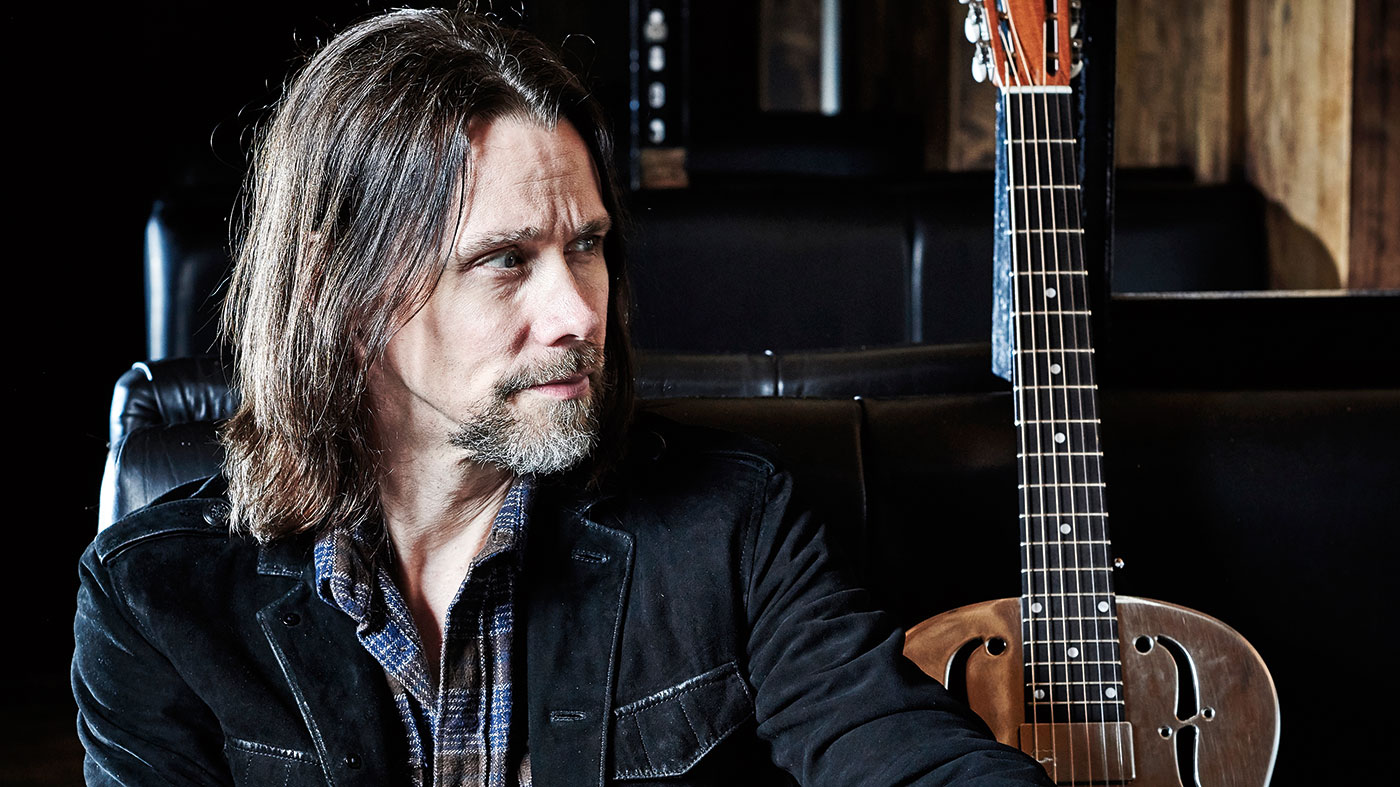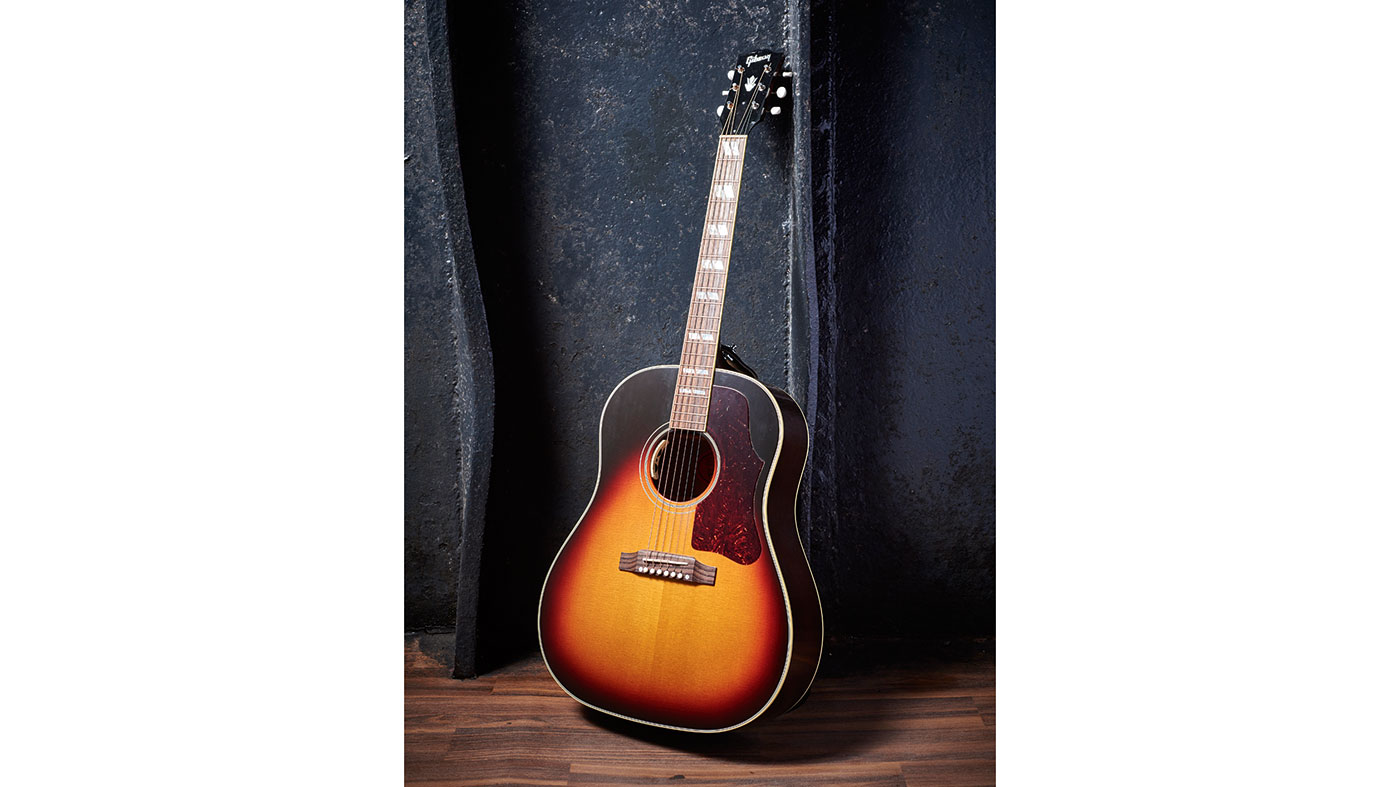Myles Kennedy: “I don’t want to be one of those players where I just fall into a routine and don’t evolve”
The Slash and Alter Bridge man discusses his fresh guitar approach on Year Of The Tiger

As Myles Kennedy’s solo career finally takes flight, we meet him on the road to find out how the Alter Bridge mainman’s childhood tragedy influenced the triumph of his new acoustic chapter...
It’s hard not to believe in the idea of fate when Myles Kennedy explains to us how his new album was named. In a rare break from the stage and studio that occupies so much of his time with Alter Bridge and his band with Slash, he was mowing the lawn when the seed of a song came from nowhere…
“The melody came into my head for Year Of The Tiger,” recalls Myles, “and I remembered I recorded it onto my phone and then I put it away for a while. But it kept popping back in my head, and I didn’t even know what Year Of The Tiger meant then – I had no idea. So I looked up and discovered, low and behold, it was the year my father passed away. And it almost felt like it was the universe instructing me that now was the time to write this record.”

Myles Kennedy’s top 5 tips for guitarists: “If I can do it, you can do it”
That year was 1974 and Myles was just four when his father Richard died after refusing medical treatment because of his Christian Science beliefs. His loss and the aftermath for Myles, his mother and brother are tackled head on with the song Year Of The Tiger and the album of the same name.
“I tried to touch on this before but for a number of reasons, I could never go there,” admits Myles. “It’s a painful subject but the idea of loss and death is a theme that runs through many of the lyrics I’ve been involved writing. It happened at such a young age it set the stage for the well I would continuously draw from. But as far as devoting an entire record to this specific event, I just could never pull it off before. It felt like it was the right time, and here we are.”
But while there is understandable personal darkness in the songs on Year Of The Tiger, there’s also plenty of hope, too. And as a player and songwriter Myles Kennedy is showing new layers that may surprise anyone who knows him from his other bands with folk, Delta blues and even rockabilly joining the mix with acoustic guitar joined by mandolin, banjo and even lap steel. There’s plenty to talk about…

Down the rabbit hole
The songs on the album are almost like vivid chapters to your family’s story. Did you take time to visualise those scenes when you were coming up with lyrics?
Want all the hottest music and gear news, reviews, deals, features and more, direct to your inbox? Sign up here.
“Yes, and that was probably the most challenging thing. I don’t think I understood just what an effect that would have on my head. For example, The Great Beyond, when I started penning the lyrics for that I really wanted to detail what it must have been like that night but also tell the story. Painting kind of surreal imagery… it’s pretty vivid. I wanted it to be vivid so the listener could see what was happening. And as I started to do that it was interesting how much that kind of hurt, for lack of a better word. I didn’t understand what I was stepping into.
The idea of plugging in my PRSs and going into a high-gain amp was definitely not an option
“I think I learned a lot about the human brain. Once I was immersed in writing the lyrics for the record, even my wife started to notice what was happening to me. She’s a mental health therapist and she filled me in on the details of how the human brain works. If you choose to jump down that hole and continue to try and visualise things and go back in time and put yourself there again, there’s a certain gravity to doing it that you have to be prepared for. And I don’t know if I was initially. I don’t think I really understood what I was jumping into.”

This is the most acoustic album you’ve done to date. What kind of new challenges did that throw up as a player and how you considered layering and arranging parts?
“One of the things that was important to me was that the acoustic guitar and vocal were essentially at the forefront so when the time came to arrange, to keep it there one of the things we did was to be very careful what you wrapped around it. So the idea of plugging in my PRSs and going into a high-gain amp was definitely not an option, as you know, once you do that it will totally mask the sound of the acoustic instruments. So when it came to what the textures were going to be and what was going to accompany the acoustic guitar, it was important to keep those pretty organic as well.
“So mandolin or banjo, and what really became the star of the show in a lot of ways was the lap steel. And that was Elvis’s [Baskette, producer] idea, I’d never played lap steel before, and he thought of it when we were talking about what instruments to use on the record. He’d just ordered this Dillion lap steel to the studio and I’d never tried to play one so I wondered if it meant we’d have to hire someone to play the lap steel parts. Because it’s not the easiest instrument, it’s not as hard as the pedal steel but it’s a different thing for a guy who plays guitar. That was strange for me, once I put it on my lap and started experimenting it felt very natural.
“I think we both liked it and I was somebody who didn’t have a great understanding of the instrument so there’s a certain innocence in that sense. A lot of times, if you put an instrument in someone’s hands who hasn’t learned the normal way of playing it, you come up with some unique approaches. We were happy with how that played out.”

Lap-dog
Your lap-steel solo in Love Can Only Heal is a real standout moment; what was your approach on it?
“I had no idea on that one. Hearing David Lindley, who was Jackson Browne’s lap-steel player with his phrasing and the way he approached things had a certain effect on how I chose to play the parts. I felt it needed to be haunting but when I sat down I had no idea what I was going to do. I felt it and stayed in the moment. It was Elvis and I, plus Jef [Mol] our engineer and we captured a moment.”
It’s bold to pick up a new instrument in the studio. Had you even played mandolin and banjo before, too?
I think that that’s the beauty of the mandolin in particular. When you tuck that in it really brings out a nice texture
“No, I never had. It was all pretty new for me. I guess what I’ve learned is, because I experiment so much with altered tunings, it kind of helps you. I guess that part of my brain was tapped in with the banjo and the mandolin. The banjo was actually not quite as hard as I thought it was going to be to play and I actually enjoyed it. That’s an instrument I would love to spend more time with in the future.
“As far as the mandolin goes, I’m no Chris Thile, who is probably one of my favourite musicians in the world right now, he’s a genius. I tried to convey whatever I was hearing in my head and make sure it was captured for the song.”
The frequencies of those instruments must be good for layering in a mix too…
“Yes, I think that that’s the beauty of the mandolin in particular. When you tuck that in, it really brings out a nice texture, and the banjo as well. The particularly interesting thing about the banjo is how much it pokes out. No matter how low you put it in the mix it’s going to poke through. That instrument definitely cuts, there’s no doubt about it!”
There seems to be a few Zeppelin nods on the album, especially to The Battle Of Evermore in Love Can Only Heal’s mandolin…
“Definitely, and the Led Zeppelin III and IV records were such a big part of my listening in my formative years. So the minute I picked up a mandolin it was almost inevitable there was going to be a tip of the hat because it’s in my musical Rolodex at this point.”
Is there also an English folk influence for you beyond Zeppelin, someone like Nick Drake?
“Absolutely. Pink Moon is one of my favourite tracks ever. I believe the tuning on Songbird [CGCFCE] is a Nick Drake tuning. Even trying to track down an older J-45 – if I’m not mistaken, I think he used one at a certain point. There’s such a beautiful melancholy to what Nick Drake did as an artist, and I felt that trying to tap into some of that would be necessary on this record.”

Go-to gear
A J-45 played an important role in this album, is that right?
“Very important. In a lot of ways I would almost say if it wasn’t for finding this specific guitar, I don’t know if this record would have been written at least as quickly as it was. What happened is I have a friend who’s on the board with my wife and I on our Future Song Foundation here in Spokane [helping young musicians] and he also happened to work at this pawn shop. So they get these great guitars that would come through. This guitar had one owner, they’d had it since the '40s and it just came through from Montana. It’s a 1944 Gibson J-45, and it’s got the banner logo on the headstock, which means it was made during the war. It was made by women because the men were all off fighting.
I went down to the pawn shop and I remember playing just a handful of chords and it was probably the loudest acoustic guitar I’ve ever heard
“So I went down to the pawn shop and I remember playing just a handful of chords and it was probably the loudest acoustic guitar I’ve ever heard, but very well balanced in a unique way. I took it home and I remember texting my friend saying it’s the strangest thing, it’s like I can’t stop writing songs with this guitar. That was really the guitar that was a catalyst for the album musically.”
Was it mostly vintage instruments on the record?
“For the most part. I used that guitar and then I borrowed a friend’s 1945 [Martin] 000-21, which is what you hear on Haunted By Design and it might be on Devil On The Wall as well. It had a great quality for the fingerpicking. And that was kept to a half-step down standard tuning. I used a 1930 National Triolian. So those were the vintage instruments but I used some newer things as well. On Blind Faith I used an NRP 14 National resonator and all those twangy leads you hear were done with a newer Gretsch Duane Eddy. In fact, any electric guitar you hear is a Gretsch.”
What is special about the resonator sound for you?
“There’s just a certain attack and every time I pick one up I find myself playing a certain way and it inspires me in a different way than an electric guitar does, or even an acoustic does. I discovered the instrument through Chris Whitley, who many people know I’m a massive fan of, I think the way he used that instrument was a very big inspiration to me. I listened to Dirt Floor so much over the years that approach certainly manifested itself on a handful of tracks on this record. It’s got a different timbre to just about any other instrument I can think of and to me it’s an aggressive-sounding instrument, which is what I really like about it.”

Rockabilly riffing
Devil On The Wall is quite an unexpected turn for you; there’s a Stray Cats rockabilly influence in there – is that how you originally heard the idea for the song?
“It did take off into a direction I didn’t expect. When I wrote it initially I remember when I was talking to Zia [Uddin, drummer and former member of The Mayfield Four with Myles] about what I heard for the drum part with the snare in particular. I do remember kind of hearing that but I didn’t know how much that feel was going to dictate, especially once I started the Gretsch guitar over the top, that it would take it us into this rockabilly territory.
“It was something I’d never really tried before as an artist and to be honest with you, I wasn’t sure if it wasn’t going too far into left-field and keeping it congruent with the rest of the record. So that was kind of interesting. And the beginning of the song has a Spanish feel, which is something I used even back in the Mayfield Four days.
In my opinion Brian Setzer’s one of the most underrated guitar players on the plane
“If you listen to the title track of Fallout we released 20 years ago, that’s a trick I’ve been using for a long time. And believe it or not, I think I probably got that approach from playing in the high-school marching band. We used to play these songs that would have that flavour to them, so I think that kind of made it into my musical arsenal in later years. But once that intro is established it kicks into that almost Brian Setzer-ish vibe. Especially with the guitar solo. Definitely a tip of the hat there.
“In my opinion, he’s one of the most underrated guitar players on the planet. I used to work in a music store and we would play the instructional video he did years ago all the time. We’d stand in front of the TV shaking our heads saying, ‘God, that guy’s good!’”
This album will surprise some fans; do you feel that you’re a player who’s constantly pushing themselves?
“When I was a kid, I could sit in my room for eight hours a day and I had that luxury. That was wonderful but now time is much more finite. But I try to keep my ears to the ground to find new things because I don’t want to be one of those players where I just fall into my routine and don’t evolve as the years go on. And I think the same thing could be said of Tremonti as well. He’s the kind of player that doesn’t want to be stagnant. I think those of us that continue to be students and continue to grow, that’s just a really important part of what we do. For me, the fear is that the well will run dry and I’ll run out of things to keep me interested, so I’m still searching.”
Year Of The Tiger is out now on Napalm Records.

Rob is the Reviews Editor for GuitarWorld.com and MusicRadar guitars, so spends most of his waking hours (and beyond) thinking about and trying the latest gear while making sure our reviews team is giving you thorough and honest tests of it. He's worked for guitar mags and sites as a writer and editor for nearly 20 years but still winces at the thought of restringing anything with a Floyd Rose.

